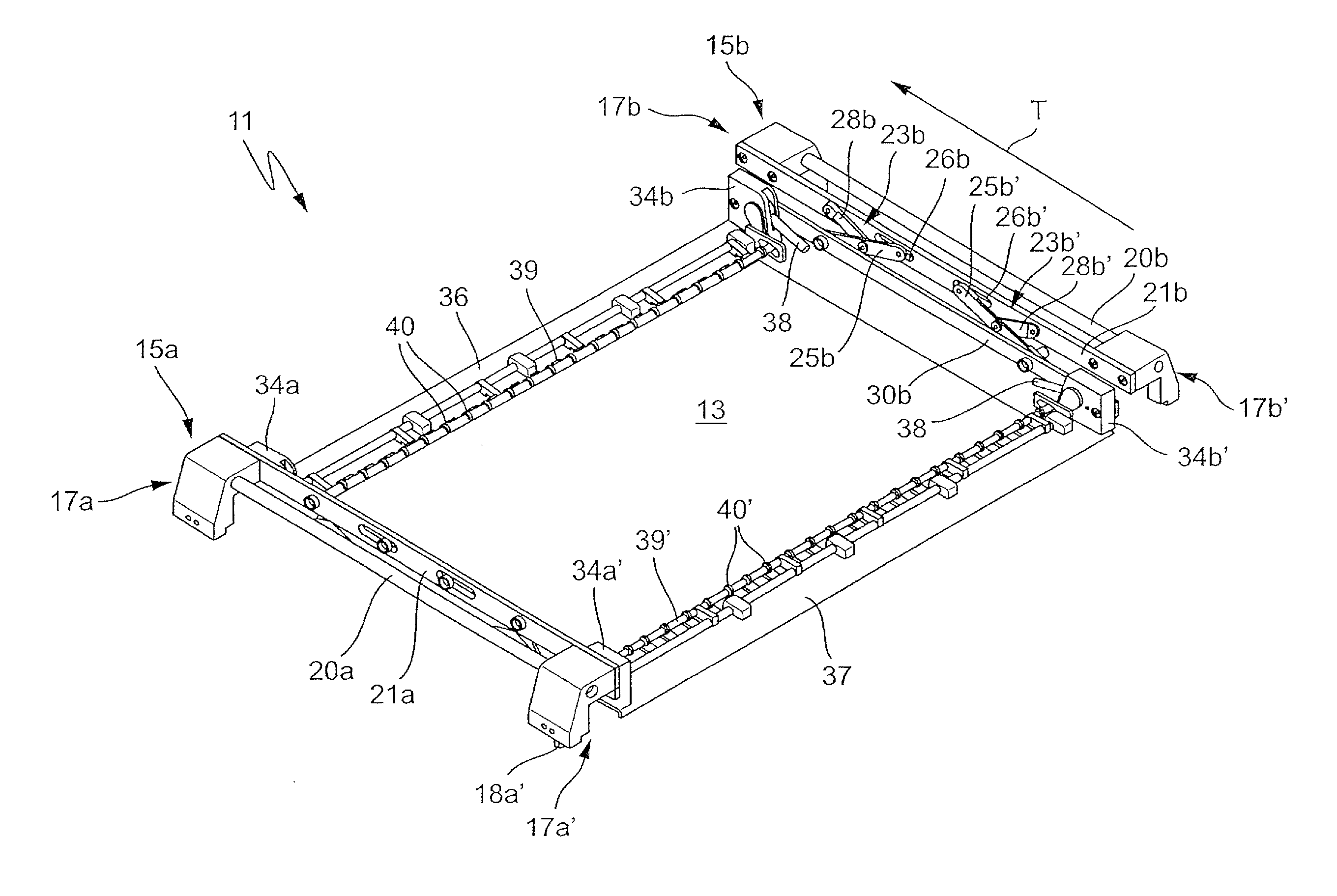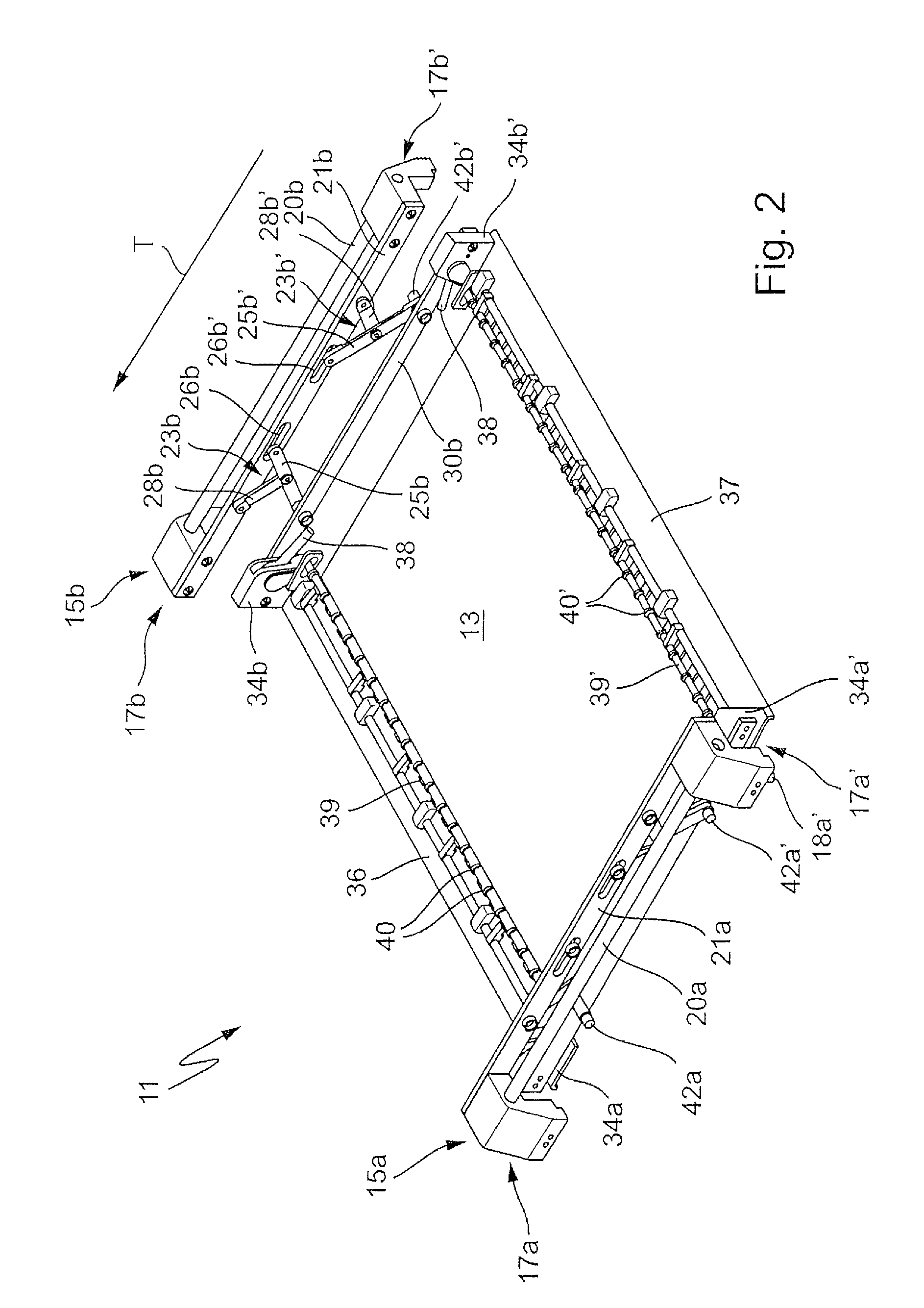Retaining Device for Thin, Planar Substrates
a thin, planar substrate technology, applied in the direction of conveyors, conveyor parts, transportation and packaging, etc., can solve the problems of increasing the expenditure of mechanical equipment, clamming together the substrate in the form of a chain on the one hand, and rigid formation of the retaining clips
- Summary
- Abstract
- Description
- Claims
- Application Information
AI Technical Summary
Benefits of technology
Problems solved by technology
Method used
Image
Examples
Embodiment Construction
[0025]FIG. 1 illustrates in an oblique plan view a retaining device 11 according to the invention in which a printed circuit board 13 is held or restrained. The retaining device 11 has a left-hand transporting carriage 15a and a right-hand transporting carriage 15b, which may be formed identically or as mirror images of each other. A transporting carriage 15 respectively comprises a front transporting part 17a and a rear transporting part 17a′ or 17b and 17b′. The transporting parts 17 may, as illustrated, have downwardly pointing transporting projections 18a′, with which they are hung on circulating transporting chains or the like in a way similar to the document cited at the beginning DE 10 2007 038 116 A1. Alternatively, the transporting parts 17 may have rollers for transporting on a rail or the like, the retaining devices 11 then being driven in a way not shown.
[0026]The two transporting parts 17a and 17a′ or 17b and 17b′ are respectively connected to each other by means of con...
PUM
 Login to View More
Login to View More Abstract
Description
Claims
Application Information
 Login to View More
Login to View More - R&D
- Intellectual Property
- Life Sciences
- Materials
- Tech Scout
- Unparalleled Data Quality
- Higher Quality Content
- 60% Fewer Hallucinations
Browse by: Latest US Patents, China's latest patents, Technical Efficacy Thesaurus, Application Domain, Technology Topic, Popular Technical Reports.
© 2025 PatSnap. All rights reserved.Legal|Privacy policy|Modern Slavery Act Transparency Statement|Sitemap|About US| Contact US: help@patsnap.com



